Porro 1 Monocular
PrototypDies ist ein Porro-1-Monokular mit einer Lederummantelung um den Messingkorpus. Dieser besteht aus einem L-förmigen rechtwinkligen Gehäusegrundriss mit einer konkaven Viertelrundung an einer Seite (s. Bild des geöffenten Gehäuses). Das Okular lässt sich zum Fokussieren Verschieben. Die Gehäusedeckel sind zweifach verschraubt, in den unteren befindet sich die eingeschraubte Objektivlinsenfassung. Die Prismen werden durch Korkplätchen direkt durch den aufgeschraubten Deckel gehalten.Leider gibt es keine Kennzeichnungen, aufgrund der Art der Belderung mit genähter Naht und vor allem der gemessenen niedrigen Lichtdurchlässigkeit des Prismensystems von nur ca. 18% lässt dies auf einen Prototyp vor 1890 schliessen. Die von Zeiss ab 1893 verwendten Schott-Glassorten hatten eine höhere Lichtdurchlässigkeit. Die Baumerkmale erinenrn an frühe Prototypen von J.G. Hoffman in Paris und E. Busch in Rathenow (s. Monokular-Geschichte Kap. I, 3). |
PrototypeThis is a porro 1 monocular with a leather covering at its brass body. The housing has a L-shaped rectangular layout with a concae quarter-circle at the recessed side(s. pic ot the opened body). The ocular can be focused by pulling in and out. The cover plates have two scews an hold the prisms directly with a thin cork plate. Theobjective frame is screwed in at the lower plate.Unfortunately there are no markings whatsoever. Yet, due to its leathering with a stitched seam, and especially because of the measured low transmission of the used glasses, i.e. only 18% this can be a prototype before 1890. The Schott glass sorts after 1890 used by Zeiss for their binocualrs had higher transmission rates. The construction resembles early prototypes by J.G. Hoffman in Paris and E. Busch in Rathenow (s. Monocular History ch. I, 3). |
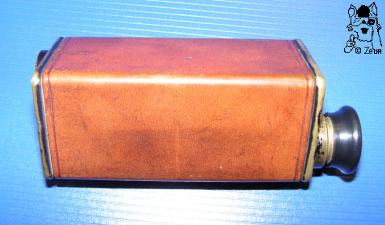
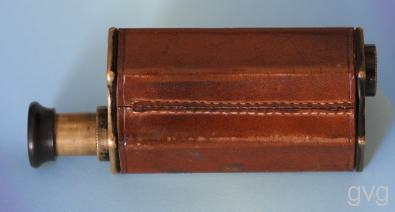

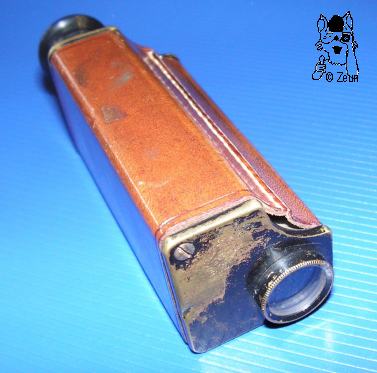
| Das Monokular ist 100x30mm groß und 195g schwer. Das Sehfeld liegt bei ca. 55m71000m. Es ist ein 10x15 Monokular. | The monocular is 100x30mm wide and 195g in weight. Field of view is about 55m/1000m. It has 10 times magnification and a 15mm objective lens. |
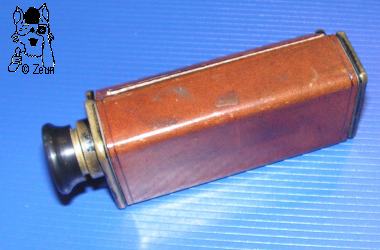
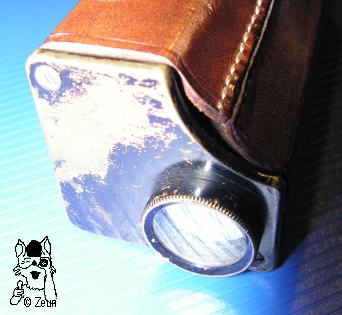
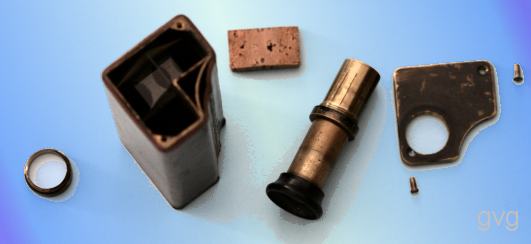
Fotos: Zeun. G.v.Ginkel (gvg)

